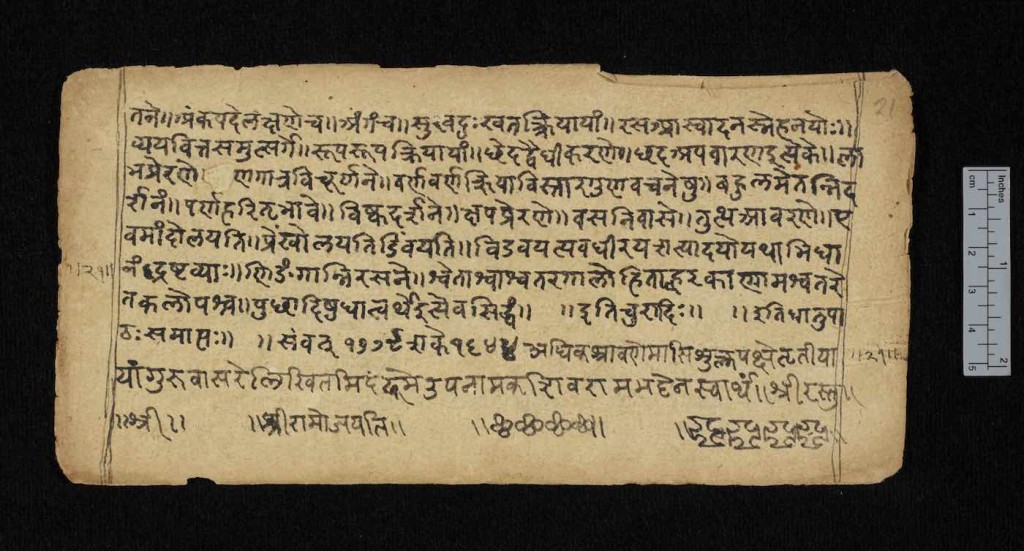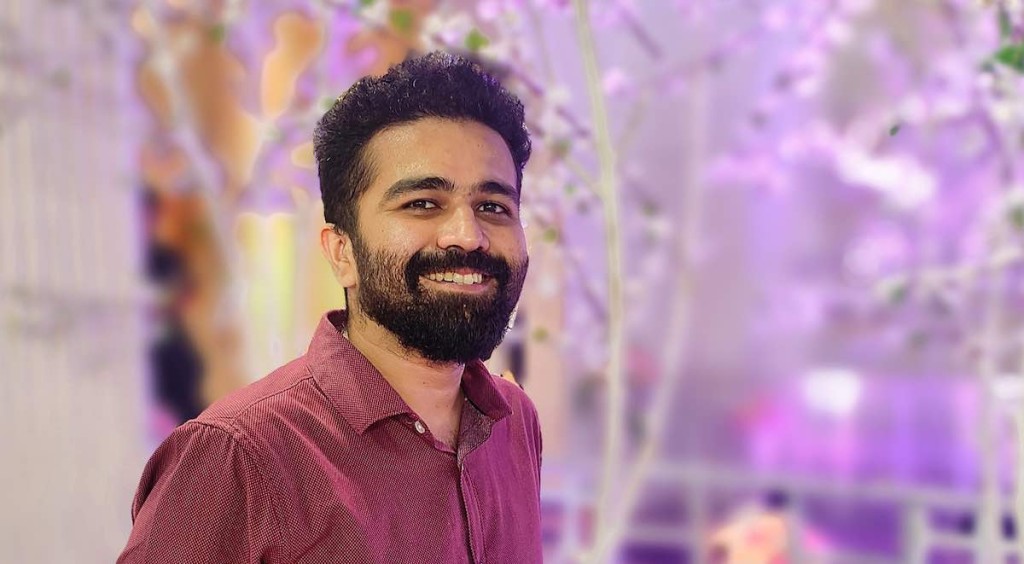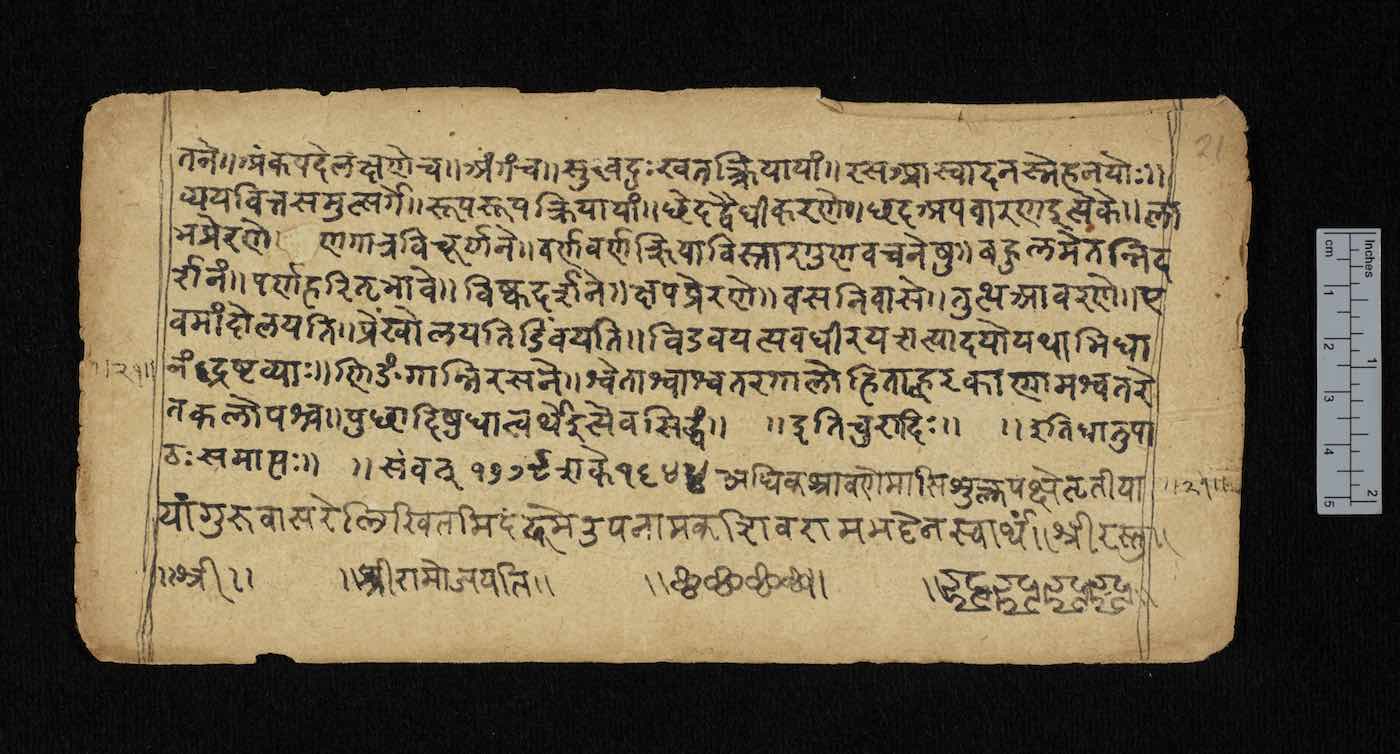
A 27-year-old PhD scholar finally cracked the riddle which has defeated Sanskrit experts since the 5th Century BC—by decoding a rule taught by “the father of linguistics” Pāṇini.
The discovery makes it possible to ‘derive’ any Sanskrit word—to construct millions of grammatically correct words including ‘mantra’ and ‘guru’—using Pāṇini’s revered ‘language machine’ which is widely considered to be one of the great intellectual achievements in history.
Leading Sanskrit scholars have described the discovery as ‘revolutionary’—and it now means that Pāṇini’s grammar can be taught to computers for the first time.
Six months before Indian-born Rishi Rajpopat finally decoded the 2,500 year old algorithm, his supervisor at Cambridge, Sanskrit Professor Vincenzo Vergiani, gave him some prescient advice: “If the solution is complicated, you are probably wrong.”
“I had a eureka moment in Cambridge,” said Dr. Rajpopat. “After nine months trying to crack this problem, I was almost ready to quit, I was getting nowhere.
“So I closed the books for a month and just enjoyed the summer, swimming, cycling, cooking, praying and meditating.
“Then, begrudgingly I went back to work, and, within minutes, as I turned the pages, these patterns starting emerging, and it all started to make sense.”
Pāṇini’s system—4,000 rules detailed in his greatest work, the Aṣṭādhyāyī which is thought to have been written around 500 BC—is meant to work like a machine. Feed in the base and suffix of a word and it should turn them into grammatically correct words and sentences through a step-by-step process.
LOOK: Photos Showing Victorians Painstakingly Rebuilding Stonehenge in 1901 Are Rewriting the Guidebooks
However, until now, there had been a huge problem. Scientists say that, often, two or more of Pāṇini’s rules are simultaneously applicable at the same step, leaving scholars to agonize over which one to choose.
Solving so-called ‘rule conflicts’, which affect millions of Sanskrit words including certain forms of ‘mantra’ and ‘guru’, requires an algorithm.
Thought to have lived in a region in what is now north-west Pakistan and south-east Afghanistan, Pāṇini taught a ‘metarule’ to help decide which rule should be applied in the event of a conflict.
But for the last 2,500 years, scholars have misinterpreted the metarule meaning that they often ended up with a grammatically incorrect result. Furthermore, in an attempt to fix the issue, many researchers laboriously developed hundreds of other metarules.
But Dr. Rajpopat showed in a paper published this week that those are not just incapable of solving the problem at hand, they all produced too many exceptions—and are completely unnecessary. He explained that Pāṇini’s ‘language machine’ is ‘self-sufficient’.
“Pāṇini had an extraordinary mind and he built a machine unrivaled in human history,” said Rajpopat, who started his PhD work at St John’s College, Cambridge, in 2017. “The more we fiddle with Pāṇini’s grammar, the more it eludes us.”

Traditionally, scientists have interpreted Pāṇini’s metarule as meaning: in the event of a conflict between two rules of equal strength, the rule that comes later in the grammar’s serial order wins.
Rajpopat rejects this, arguing instead that Pāṇini meant that between rules applicable to the left and right sides of a word respectively. Pāṇini wanted us to choose the rule applicable to the right side. Employing this interpretation, Rajpopat found Pāṇini’s language machine produced grammatically correct words with almost no exceptions.
“Over the next few weeks I was so excited, I couldn’t sleep and would spend hours in the library including in the middle of the night to check what I’d found and solve related problems. That work took another two-and-a-half years.”
POPULAR: Priceless Tapestry Is Made Whole as Missing Piece is Returned, Solving 40-Year Heist Mystery
Prof. Vergiani heralded the news, saying, “My student Rishi has cracked it. He has found an extraordinarily elegant solution to a problem which has perplexed scholars for centuries.”
“This discovery will revolutionize the study of Sanskrit at a time when interest in the language is on the rise.”
Sanskrit is an ancient and classical Indo-European language from South Asia. It is the sacred language of Hinduism, but also the medium through which much of India’s greatest science, philosophy, poetry, and other secular literature have been communicated for centuries.
While only spoken in India by an estimated 25,000 people today, Sanskrit has influenced many other languages and cultures around the world.
Rajpopat, who was born in Mumbai and learned Sanskrit in high school, explained, “Some of the most ancient wisdom of India has been produced in Sanskrit and we still don’t fully understand what our ancestors achieved.
“I hope this discovery will infuse students in India with confidence, pride, and hope that they too can achieve great things.”
LOOK: Stunning 2,000-Year-old Glass Bowl is Still Flawless After Archaeologists Dig it Up in Netherlands
He said that a major implication of his discovery is that now we have the algorithm that runs Pāṇini’s grammar, we could potentially teach this grammar to computers.
“Computer scientists working on Natural language processing gave up on rule-based approaches over 50 years ago. So teaching computers how to combine the speaker’s intention with Pāṇini’s rule-based grammar to produce human speech would be a major milestone in the history of human interaction with machines, as well as in India’s intellectual history.”
IT’S NO MYSTERY That You Should Share This Breakthrough on Social Media…





















Wow. Stunning achievement. It’s amazing how when the mind quiets down, we can “see & hear” so much more.